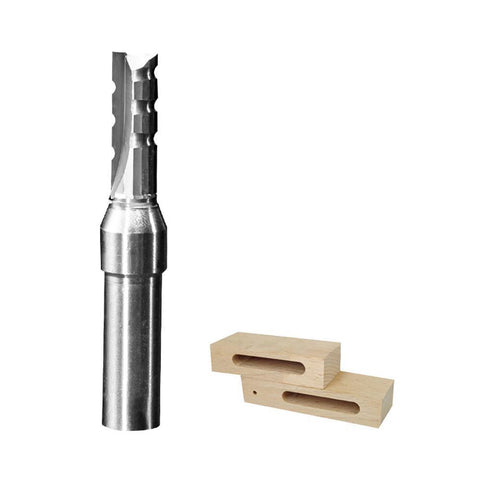CNC Bits For 3D Carving
Unleashing Depth and Detail: CNC Bits for 3D Carving in Woodworking
CNC technology has transformed the landscape of woodworking, bringing precision, efficiency, and innovation to a craft that once relied heavily on manual skill. One of the most exciting applications of CNC machines is in 3D carving, where intricate and detailed designs come to life with stunning depth. The key to unlocking the full potential of 3D carving lies in the choice of CNC bits. These specialized tools, with their varied shapes and sizes, allow woodworkers to achieve fine details, smooth textures, and complex 3D designs that would be almost impossible with hand tools alone.
CNC bits for 3D carving are designed specifically to work with CNC routers, which follow programmed paths to carve or engrave materials with high accuracy. The precision of CNC machines combined with the right carving bits allows artisans to create detailed, three-dimensional designs in a variety of materials, including wood, plastic, and foam. From beautifully textured wood panels to intricate sculptures, CNC bits are essential in executing the fine details that define a 3D carving.
The most commonly used bits for 3D carving are ball-nose bits, tapered bits, and V-bits, each offering distinct advantages depending on the carving technique and the material being used. Ball-nose bits, with their rounded tip, are ideal for creating smooth, flowing curves and detailed, sculptural designs. These bits are often used for relief carving or when creating contours and rounded surfaces. The smooth, spherical shape of the ball-nose bit allows for deep cuts while maintaining a consistent, uniform finish, making it perfect for intricate 3D projects like portraits, landscape scenes, or custom signage.
Tapered bits, on the other hand, are designed for fine details and narrow cuts. They have a pointed tip that tapers as it moves down the bit, allowing woodworkers to carve sharp, precise details even in tight spaces. Tapered bits are ideal for engraving delicate designs, text, or intricate patterns that require a high level of detail. They are often used in combination with ball-nose bits to create both detailed areas and smooth transitions, resulting in a multi-dimensional effect that adds depth to the carving.
V-bits, which are shaped like a "V" at the cutting edge, are primarily used for carving precise angles and sharp details. These bits are especially effective for lettering, engraving, and designs that require clean, crisp lines. When used in 3D carving, V-bits can also create textures and geometric shapes, adding a contrast to the softer curves made by ball-nose or tapered bits. V-bits are versatile, enabling the woodworker to create both fine details and more pronounced carvings, making them a staple in many 3D carving projects.
The material being carved also plays a significant role in determining the best CNC bit for the job. For softwoods, such as pine or cedar, most CNC bits work effectively at moderate speeds and depths. However, when working with hardwoods, such as oak, walnut, or maple, harder materials demand CNC bits that are specifically designed to maintain sharpness and handle more challenging cuts. Carbide-tipped CNC bits are the preferred choice for hardwoods because of their exceptional durability and ability to hold an edge over long periods of use. Carbide is particularly important when undertaking deep, complex cuts, as it reduces the likelihood of the bit dulling prematurely, which can compromise the quality of the carving.
One of the significant benefits of using CNC bits for 3D carving is the ability to replicate designs with high consistency. Once a 3D model is created and programmed into the CNC machine, the bit will follow the exact same path every time, ensuring uniformity across multiple copies of the design. This is especially valuable for commercial woodworking applications where multiple identical items need to be produced. Whether creating custom furniture, decorative panels, or intricate sculptures, the ability to replicate designs with perfect precision is one of the key advantages of CNC carving.
Additionally, CNC bits for 3D carving allow for a wide range of artistic expression. The ability to control the depth of the cut with incredible accuracy means that artists can create multi-layered, textured surfaces that add dimension and interest to any piece. By adjusting parameters such as feed rate, spindle speed, and bit selection, woodworkers can produce varying depths, sharp contrasts, or smooth gradients, allowing for endless possibilities in texture and finish. This makes CNC bits invaluable for designers seeking to create one-of-a-kind pieces that are as intricate as they are beautiful.
Using CNC bits for 3D carving also increases efficiency in the woodworking process. Traditional hand-carving methods can be time-consuming and physically demanding, particularly when dealing with large-scale or highly detailed designs. With CNC technology, the process is significantly faster, with the machine doing much of the heavy lifting. This allows woodworkers to complete projects in less time while maintaining high levels of detail and accuracy. For both professional artisans and hobbyists, this means more time for creativity and innovation rather than labor-intensive carving techniques.
In conclusion, CNC bits for 3D carving have revolutionized the way woodworkers approach intricate designs, enabling them to create stunning works of art with speed, precision, and detail. From ball-nose and tapered bits to V-bits, the variety of tools available ensures that each project can be tailored to achieve the perfect result. Whether working with softwood or hardwood, the durability and sharpness of CNC carving bits allow for flawless cuts and consistent, repeatable results. As technology continues to advance, the possibilities for 3D carving in woodworking will only expand, empowering craftsmen to push the boundaries of their creativity and produce works of exceptional beauty and craftsmanship.



